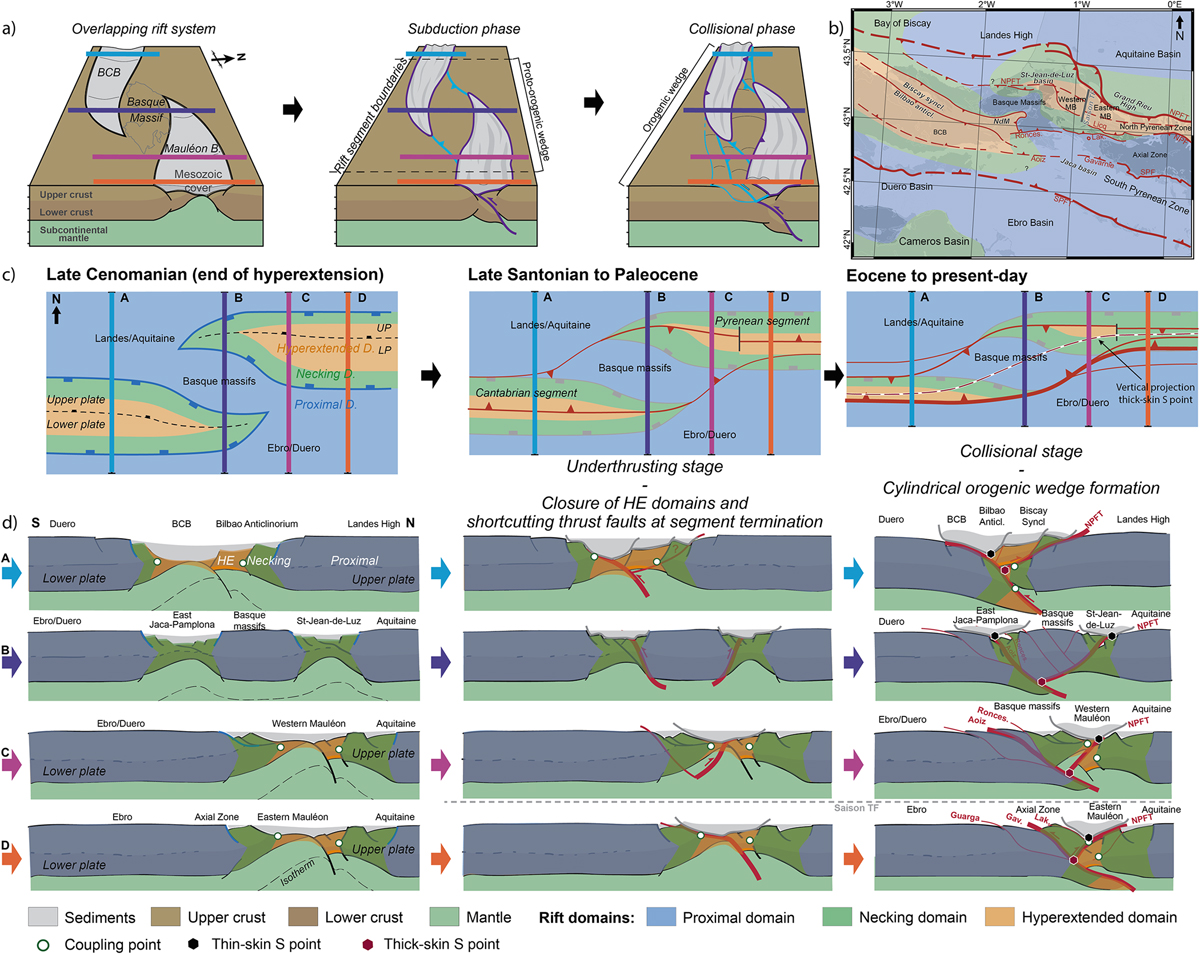Fig. 11

Download original image
Reactivation of overlapping en-echelon rift segments based on the example of the Pyrenean-Cantabrian junction showing the importance of shortcutting structures and their role in preserving rift structures (modified from Lescoutre and Manatschal, 2020). (a) Schematic 3D evolution of the Pyrenean-Cantabrian junction highlighting the structural evolution during the subduction (Late Santonian-Paleocene) and collisional (Eocene-Miocene) phases. (b) Rift domains map of the Pyrenean-Cantabrian junction. (c) Schematic kinematic restoration of the rift domains map (panel b) at Late Cenomanian (end of hyperextension), Late Santonian to Paleocene (early convergence), and Eocene to present-day (late and post convergence) stages. The locations of the cross-sections shown in panel d are represented. (d) Cross sections across the Pyrenean-Cantabrian junction (see panel c for location) showing the evolution for the Late Cenomanian (end of hyperextension), the Late Santonian to Paleocene stage (early convergence), and the Eocene to present-day (late- and post-convergence) stages. Abbreviations used in the Figures: BCB: Basque-Cantabrian Basin; MB: Mauléon Basin; SPF: South Pyrenean Fault; NdM: Nappe des Marbres; Lak: Lakoura thrust; Gav: Gavarnie thrust; Ronces: Roncesvalles thrust; NPFT: North Pyrenean Frontal Thrust; NPF: Northern Pyrenean Fault.
Les statistiques affichées correspondent au cumul d'une part des vues des résumés de l'article et d'autre part des vues et téléchargements de l'article plein-texte (PDF, Full-HTML, ePub... selon les formats disponibles) sur la platefome Vision4Press.
Les statistiques sont disponibles avec un délai de 48 à 96 heures et sont mises à jour quotidiennement en semaine.
Le chargement des statistiques peut être long.




